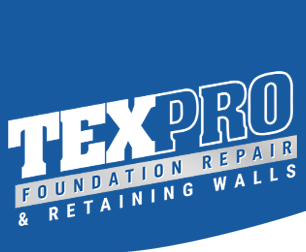A sinking foundation is one among many other foundation issues such as foundation cracks, foundation upheaval and so on that can get extensive and more dangerous with time if neglected. Two main factors that cause a home foundation to sink can be that the soil on which the house was built on was loosely packed soil, or the soil is going through expansions or contractions due to the change in moisture levels in the surroundings.
What causes a sinking foundation?
The soil under the house is what supports the foundation. If this soil is loosely packed, the soil particles will be pushed together and compacted due to the weight of the structure acting as a compression force. Because of this the foundation loses the support it had initially received from the ground, thus, making the foundation sink.
Some soils undergo contractions when the surrounding is dry. This is because when the surrounding is dry, the soil loses water molecules and dries up causing the constituents of the soil to shrink. This creates spaces between the particles like in loosely packed soil. Hence, if the soil is of a type that undergoes major contractions due to the decrease in water levels, like clay soil for example, it will also cause the foundation to sink.
Some signs of a sinking foundation
There are several indicators that will help you figure out whether your home is facing the problem of a sinking foundation. You may also be able to get an idea of how dire the situation is by inspecting the extent of damage.
Foundation cracks are a noticeable sign of a sinking foundation. When cracks appear and seem to be expanding it means that the foundation is moving i.e. part of the foundation is sinking. But if the cracks don’t expand with time it may just be a harmless case of concrete shrinkage cracks. Common advice given by professionals in the field is to not try to fill in the cracks with cement or any such substitute because it might act as an obstacle when repairing the foundation.
Cracks on walls or above window and door frames are another indication. Cracks on walls may occur for reasons other than the sinking of foundation as well. But if these cracks are wider at the top the reason is most probably a sinking foundation. You may also notice that the window and door frames start to separate from the walls or cracks around them.
Moisture level and its effects
You may find that some doors and windows get jammed and won’t budge when you try to open them like they used to. But just like in the cases mentioned before, the problem might not entirely be related to foundation sinking and it might be due to expansion of doors and windows as a result of increase in moisture levels. And if the case is worse you might even find that you can’t close the doors or windows at all because the frame has slanted or shifted. This is due to the sinking foundation too.
Uneven floors are another sign that may not be apparent at the initial stages, but becomes clear with time as the foundation starts sinking even more. This tilting will become more and more unsafe for the residents, especially if there are children or any disabled persons since the angle would make it harder to stand straight and move about while using any sort of walking aids.
There are cases where one might hear house settling noises. It may not be apparent most often but sometimes you may hear the noise of the soil particles pushing and brushing against one another and settling in.
Will a sinking foundation repair itself?
Something we need to keep in mind is that a sinking foundation does not repair itself. Many homeowners may ignore the signs of a sinking foundation thinking that it’s something that is seasonal and hoping it will go away on its own. But that must not be done. In fact it will lead to your home foundation problems getting even worse. The problem you could have solved with a small expense will turn into a major problem that requires extensive inspection and costly repairs.


